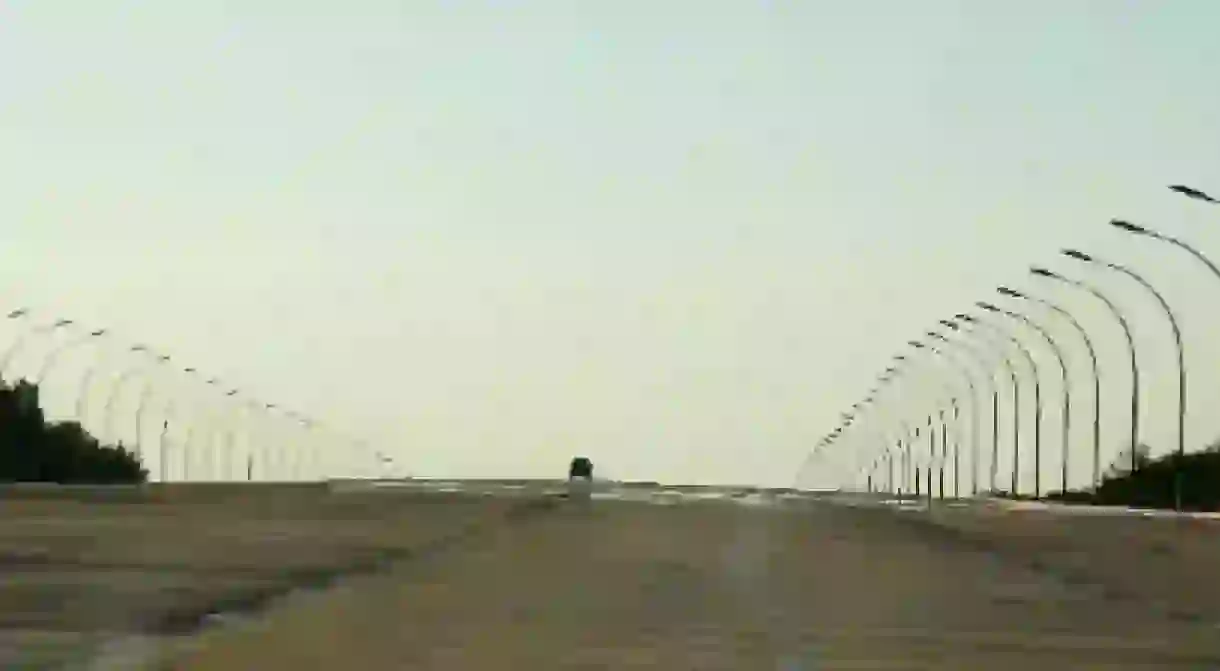Neglected Naypyidaw: Burma’s Deserted Super-City

Burma’s ‘ghost-town’ capital, Naypyidaw, conjures up an eerie feeling of unrealized ambition. The sudden development of this extravagant city was either a logical nod towards a populated future or a means for the government to escape the congestion and chaos of its predecessor, Rangoon, with a capital built for maximum control.

Naypyidaw lies in the middle of Burma, one of south-east Asia’s poorest countries, also known as Myanmar. Eight years ago, the rulers of Burma announced that the country’s capital would be moving from its seat in Rangoon to the newly built city of Naypyidaw, which translates to ‘Abode of Kings.’ The opulent new city, built from scratch a decade ago, was rumored to cost up to $4 billion to construct, funded by Burma’s rich resources of oil, teak, and jade. The new capital, unveiled in November 2005, proved to be a dramatic departure from the bustling streets and crumbling colonial piles of Rangoon. Burma is now home to a multi-billion dollar empty, urban monstrosity, smack in the middle of a jungle. Naypyidaw represents a beacon of nationalistic excess within the largely impoverished country.
The reason behind the sudden relocation of the capital is open for speculation. Some feel that it was for security purposes, allowing fortified seclusion for the paranoid military junta previously in power. However, the military claimed that the move was logical one, made to escape the crowding of Rangoon and to be closer to the centre of the country. Some Burmese people feel that the change was an effort by the government to escape its citizens and lessen the threat of nationwide demonstrations, which are often held in urban centres.

It is also rumoured that the migration was purely due to paranoia on the part of Than Shwe, then head of the military government, who was known to be deeply superstitious. Shwe was reportedly told by an astrologer that an American attack was imminent, and he was thus urged to escape Rangoon as quickly as possible. While Shwe seems to have heeded this call, the same cannot be said for the rest of the country, who continue to see Rangoon as Burma’s most important urban hub. Naypyidaw has become a symbol of the ageing autocrat’s willingness to squander Burma’s wealth to glorify his regime. The decision to spend millions on a new capital, when the economy was in shambles and thousands of citizens were starving, has been strongly criticized. Few people in Burma get more than three hours of power a day, and many earn just $1 for a day’s work.The development of the new capital seems to have heralded yet another step back for a country virtually destroyed since the military took power in the 1962 coup.

This city extends an estimated 4,800 square kilometers, which is six times the size of New York City, but has very few traces of human life. The government claims that over 900,000 people inhabit Naypyidaw. This is clearly an exaggeration, as it would make it the third largest city in Myanmar.The sprawling capital only houses around 2% of the country’s population, and appears to be a city without a soul.
The roads have up to 20 lanes and are rumoured to be designed to enable the landing of aircrafts in the event of anti-government protests or other ‘disturbances.’ However, the only signs of life along mile after mile of empty highway are straw-hatted street sweepers. Naypyidaw’s battle against the dust is an uneasy demonstration that remoteness provides no insulation against reality. The city’s vast multi-use stadium, Wunna Theikdi, contains a 30,000 seat outdoor arena, an indoor stadium, training fields, and features a six-lane road leading up to it. Almost all of Naypyidaw’s hotels are located in the ‘hotel zone,’ which resembles an abandoned version of the Las Vegas strip. The city’s shopping mall and hyper-mall are unusual features for Myanmar, which has one of the lowest standards of living in Asia. Despite the country’s crushing poverty, the city contains giant traffic roundabouts, landscaped grass, and sprinkler systems.

It is a city of sprawling zones, and all of Naypyidaw’s roads lead to Burma’s most powerful seat. The parliamentary centre of the city contains 31 buildings, situated on a huge site containing the colossal public sculpture, the ‘Statue of the Kings.’ It also houses the legislature, the 100-room presidential palace, and the city hall.

At the heart of the city is a golden temple, designed to appease and honour the gods. The giant pagoda overlooks the city, featuring a Buddha tooth relic provided by China. The city is also home to a safari park, a zoo, four golf courses and an endless series of giant detached buildings. Most of the empty restaurants feature free, fast Wi-Fi. Naypyidaw seems to have everything you’d desire in a large capital city — except people.
Naypyidaw used to be largely off-limits to Western visitors. However, it now seems to be opening up to travelers as the government aims to turn the country into a more important regional player. Despite previous criticisms about the government’s attempted isolation from its citizens, more recent assessments locate the shift of Burma’s capital in an attempt to make a clean break with the country’s past. Naypyidaw could become a big part of Burma’s future, particularly if the country’s economy continues to grow. Increasing numbers of residents and foreigners in this once-lifeless metropolis are a positive indication that Naypyidaw may not be empty for long.













